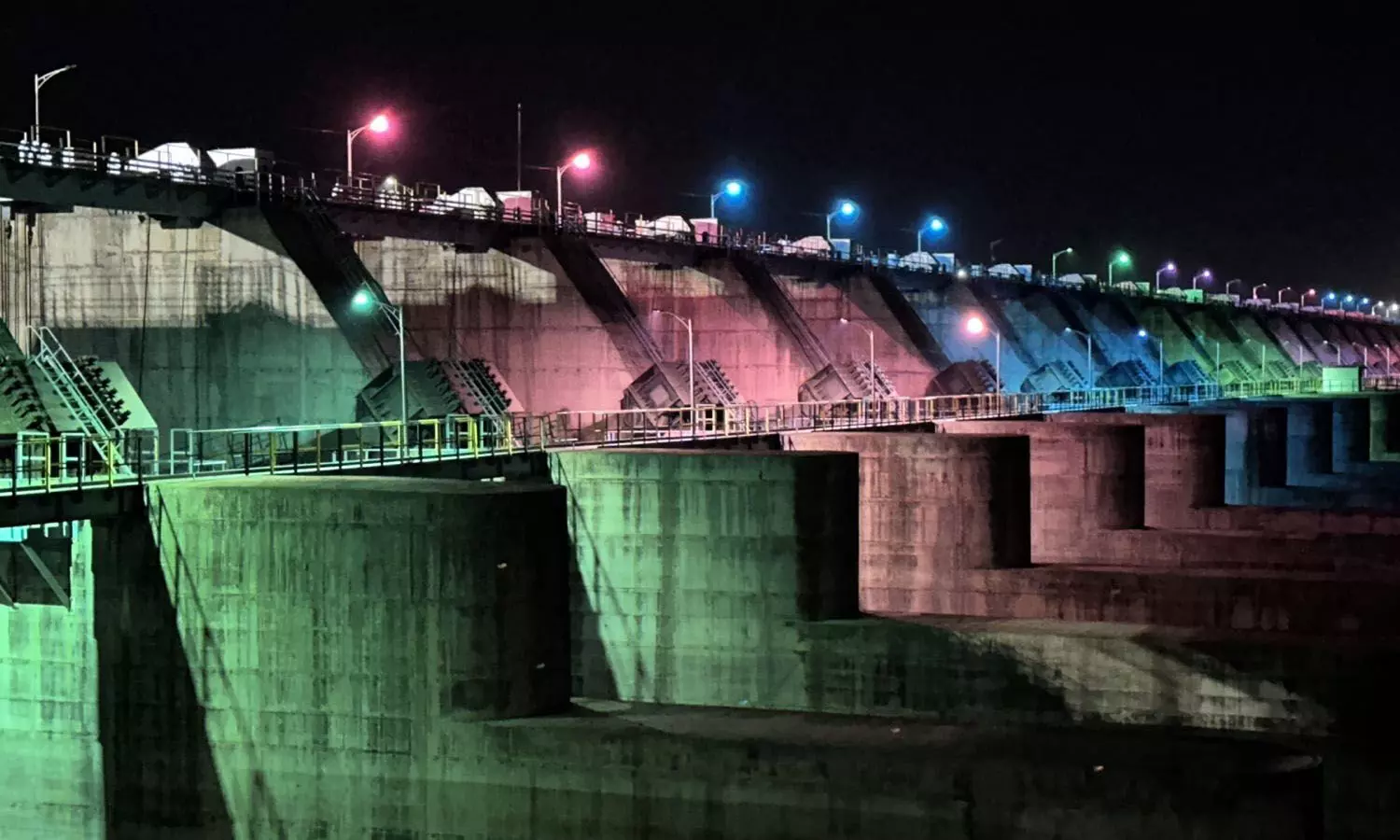10 Years of Telangana: Irrigable area doubled from 62.48 L acres to 135 L acres at Rs.1.61 lakh cr
Telangana which was endowed with two major rivers and their tributaries, has endured acute irrigation and drinking water shortage for decades under the rule of erstwhile Andhra Pradesh.

HYDERABAD: Telangana which was endowed with two major rivers Godavari and Krishna and their tributaries, has endured acute irrigation and drinking water shortage for decades under the rule of erstwhile Andhra Pradesh.
With its interlinked minor irrigation tanks and ponds destroyed beyond repair, the farmers of the state depended on the vagaries of monsoon. Dryland agriculture, dependence on bore water, and lack of sufficient power broke the back of the Telangana farmer.
The availability of water in the Krishna and Godavari basins was uneven. Water was available only during the months of June to October under the influence of the southwest monsoon. Though the average annual rainfall was 927.58 mm, it ranged from 604 mm in the semi-arid belt in Mahabubnagar district to 1,157mm in north Telangana.
The state has a total allocation of 1266.94 TMC, 967.94 TMC in Godavari and 299 TMC (Adhoc) in Krishna. In addition, it could use 250 TMC apart from 500 TMC of surplus water in both rivers. Due to deliberate neglect of the Telangana region in the combined state of Andhra Pradesh, there was little scope for tapping assured water in the projects. It was difficult to ensure even safe drinking water to most of the districts.
The new state, new aspirations
After the birth of Telangana as the 29th state of the Indian Republic, Chief Minister K Chandrashekar Rao initiated several steps to augment irrigation potential, by constructing new projects, redesigning existing projects, and fighting for the state’s due share in river water. The government has given the highest priority for the creation of infrastructure to irrigate 125 lakh acres in the state as against the total culturable area of 167 lakh acres.
According to the Socio-Economic Outlook 2023, during the 2014-15 to 2022-23 period, the Telangana government spent Rs 1.61 lakh crore on irrigation projects, resulting in an increase of the gross irrigated area from 62.48 lakh acres in 2014-15 to 135 lakh acres in 2021-22, an astonishing increase of 117 percent.
The Kaleshwaram lifts a river
Leading the transformation of Telangana’s irrigation sector was the world’s largest multi-stage lift irrigation project, Kaleshwaram which lifts water from a height of 100 meters from Medigadda to 600 meters at Kondapochamma Sagar reservoir. The effort was aptly called “Lifting A River,” by Discovery Channel in its special documentary.
Considering the insufficient water availability at Tummidihatti, where the Pranahitha Chevella project was to be built, the Telangana government redesigned the project and renamed it the Kaleshwaram Lift Irrigation Project (KLIP). It was estimated that expenditure on storage of one TMC of water in Pranahitha Chevella would have been Rs 2741.50 crore, whereas it was only Rs 568.72 crore in KLIP.
The project was built to create a new ayacut of 19.63 lakh acres and stabilisation of 18.83 lakh acres which covers 13 districts, 31 constituencies, 121 mandals, and 1698 villages. It consists of seven links and 28 packages. The project is a complex network of three barrages, 15 reservoirs,21 pump houses, 19 sub-stations, 1531 km network of gravity canals, 203km length of tunnels, and 98km of pressure mains. Its total storage capacity is 141 TMC with a power demand of 4959 MW if the pumps are run regularly. An ayacut of about 30 lakh acres, which includes SRSP II and Nizamsagar ayacut, was stabilised through KLIP in the last two years in Vanakalam and Yasangi seasons.
To fully utilize Godavari water through KLIP the government decided to lift three TMCs by augmenting pumping capacity by one more TMC. So far 50 percent of works are completed and 91 percent of land acquisition is completed. It is proposed to complete the project by December 2023 followed by the completion of the canal system in two to three years.
Palamuru Rangareddy boon for south Telangana
Towards meeting the long-felt dream of using Krishna River water for Mahabubnagar and Rangareddy districts, the Palamuru Rangareddy Lift Irrigation scheme (PRLIS) was taken up. The project envisages lifting 90 TMC of flood water in 60 days to supply drinking water to 1226 villages in 70 mandals of Nagarkurnool, Mahabubnagar, Narayanpet, Vikarabad, Rangareddy and Nalgonda districts including Hyderabad City in phase-I and irrigation facilities to 12.3 lakh acres in phase-II.
Most of the works about reservoirs with a gross capacity of 64.72 TMC, tunnels of length 99.894 km and canals of length 30.38 km and pump houses have been completed.
Sitarama Lift Irrigation Project
The Telangana government took up the Sitarama Lift Irrigation Project (SRLIP) by redesigning and combining the proposed Rajiv Gandhi Dummugudem and Indirasagar Rudramkota lift irrigation projects in Khammam district. It is proposed to create a new ayacut of 3.29 lakh acres and stabilization of 3.45 lakh acres, covering three districts and nine constituencies. It consists of a network of four pump houses and 299 km of gravity canals.
Restoration of water storage tanks
The Mission Kakatiya programme aimed at desilting water bodies and enhancing their water storage capacity did wonders by reviving the groundwater level all over the state. Under this programme, 27,819 tanks were taken up and 21,633 were restored with an expenditure of Rs 5,464 crore stabilizing an ayacut of 15.05 lakh acres and restoring 9.61 TMC of storage capacity.
Similarly, 1416 check dams with a capital outlay of about Rs 4667 crores were built to capture run-off and regenerated water in the streams and foster rejuvenation of the streams.



